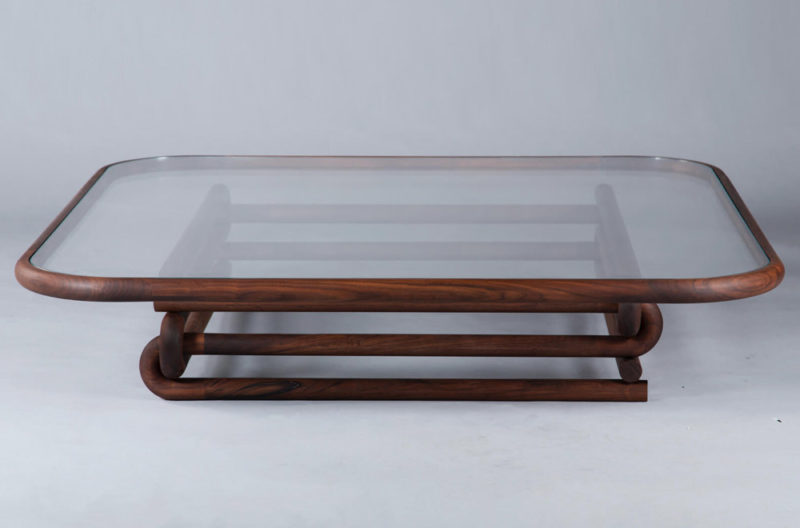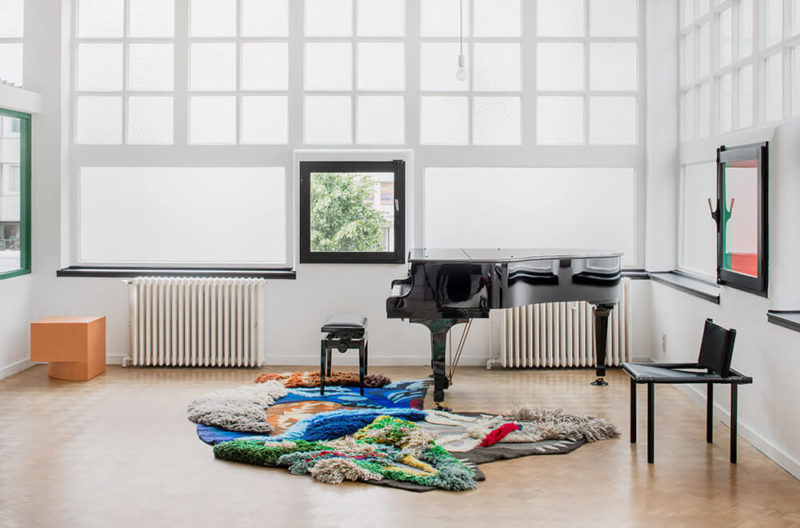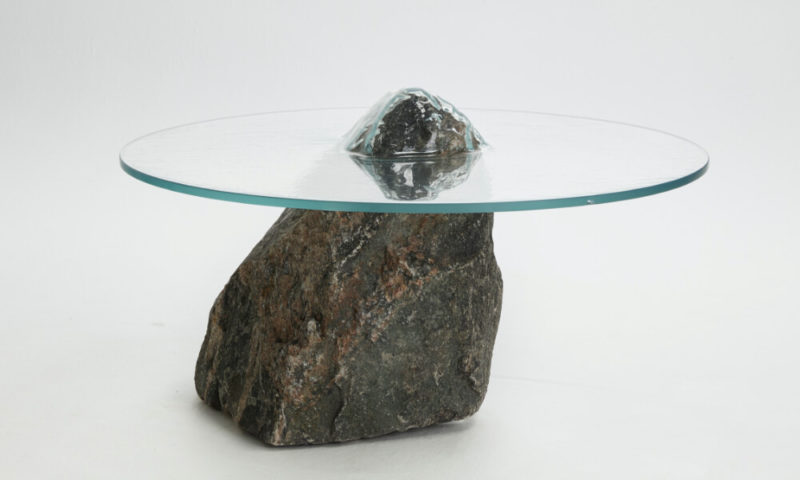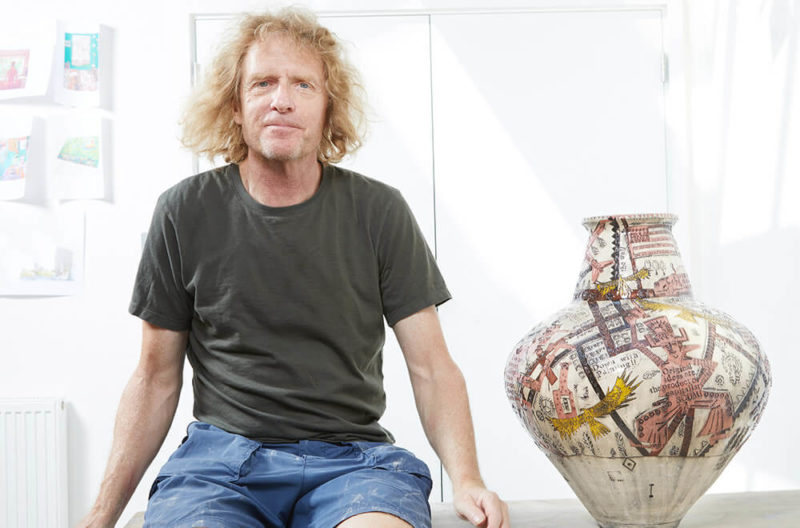Francesca Torzo: Gestures
Ballet dancer turned architect, Torzo has designed her first exhibition of furniture with elegance and ease of the body in mind.
Maniera, Brussels
20th September – 21st November 2020
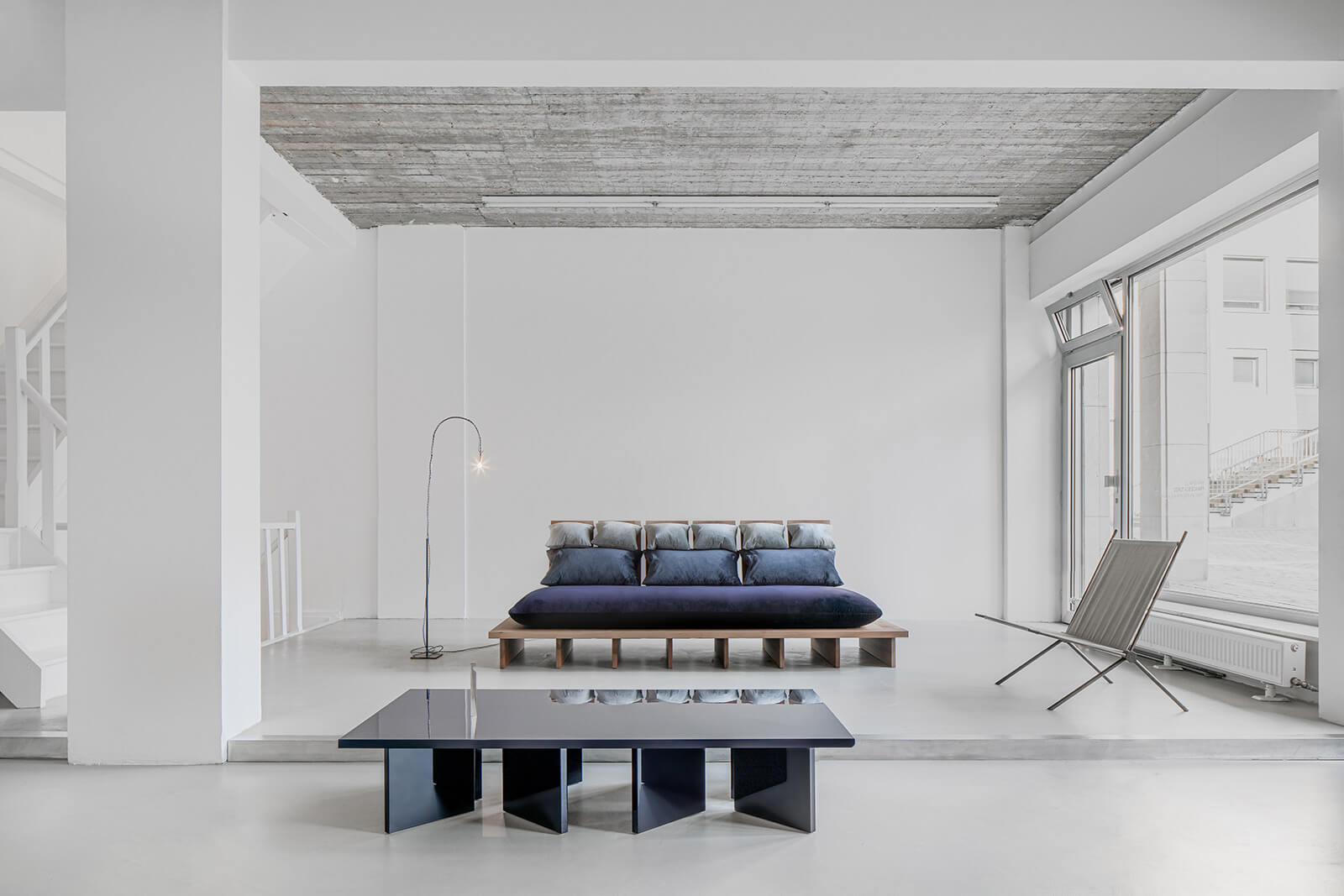
Installation view with ‘Ottomano’ couch, ‘Paolo’ chair, ‘Capretta’ table and prototype lamp
COURTESY: Maniera / PHOTOGRAPH: © Jeroen Verrecht
THIS WEEK MANIERA Gallery opened a solo show of furniture pieces and objects by Francesca Torzo, the renowned Italian architect. Torzo, a former collaborator with the sublime minimalist, Peter Zumthor, has recently won widespread acclaim for her extension to the Z33 House for Contemporary Art, Design and Architecture in Hasselt, Belgium, completed in 2019. A winner in 2018 of the International Piranesi award, in 2020 she has been awarded both the Italian Architecture Prize for best building and the Moira Gemmill Prize for Emerging Architecture. Never before, however, has she attempted furniture. On the eve of the show’s opening, which encompasses six pieces of furniture (a sofa, an armchair, a chair, a table, a foldable low lounge chair and a clothes hanger), two kitchen objects (a bottle opener and a mortar) and two textile objects (a kimono and a plaid), The Design Edit spoke to Torzo about the project:
The Design Edit (TDE): Why did you accept this challenge to design furniture?
Francesca Torzo (FT): I already knew the work of Maniera, which I respect highly. The gallery is very independent and they have a clarity of vision. They are highly loyal to their own passion – you can see that in their choice of people and projects.
They contacted me at the very beginning of 2019 and, at first, I was humbled. I wondered how they knew me because I have been in the silence and shadows, for a long time. Then, I was surprised because they asked me to make a proposal with complete freedom – something that was both terrifying and exciting. I accepted out of curiosity and respect, two simple motivations.
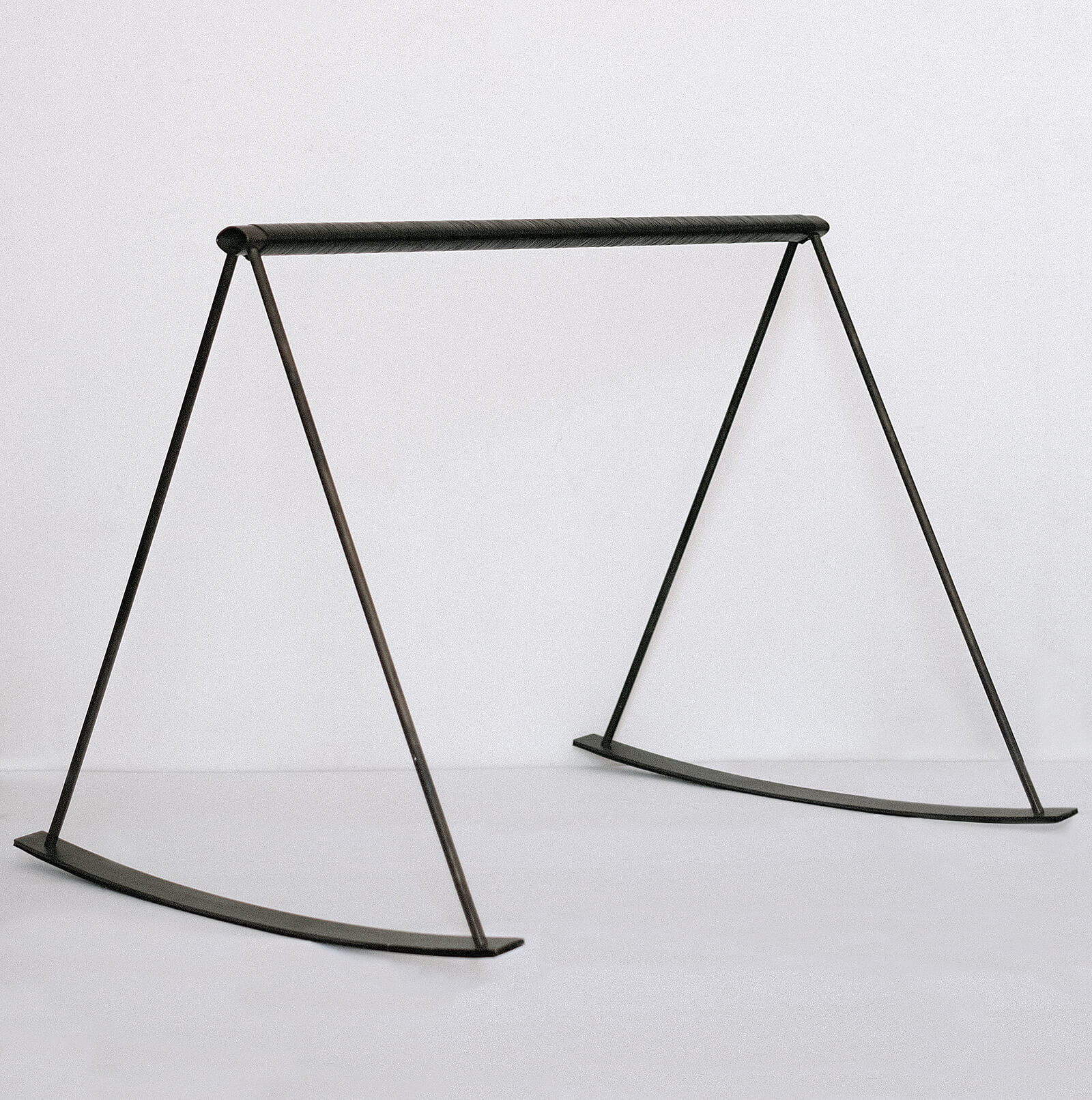
Francesca Torzo for Maniera, ‘Dondolo’ clothes hanger, 2020
COURTESY: Maniera / PHOTOGRAPH: © Julia Nahmani
TDE: How did you decide which objects to make?
FT: When I started I had no idea how many pieces they wanted, so we started with a tiny collaboration, where many of us were asked to propose objects. I designed a bottle opener. Then when they contacted me about a real show, I just made wishes. I was curious to make several things and that was the origin of the sofa, chair, table and clothes hanger. And then they asked me to do something with the texture of the diamond brick, from the Z33 art house project, but I needed to emancipate myself from that. I want to be able to move on and not repeat something that is already done, so I proposed making a kimono and also a throw.
TDE: What was it like for you designing a textile?
FT: The kimono was for me the most inexplicable work, because I quite literally measured my body, one sleepless night, and made a scale drawing. I then transferred the drawing to some beautiful linen (a very fine cloth from the last century), and just cut it and sewed it. I know how to sew because I was a classical ballet dancer and I learnt how to alter my own dresses and shoes. It fitted well! And then I took it to a professional team of haute couture pattern-makers and they changed a few small details. It is as if it had been painted on the body, it is mysterious. It is a very sensual piece, very erotic.
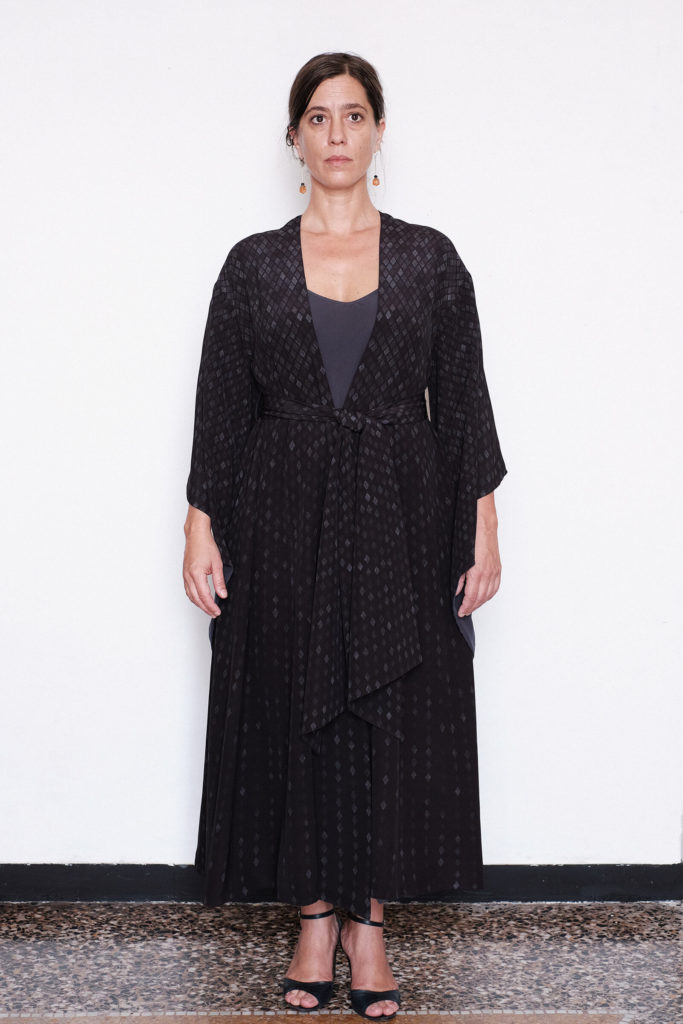
Francesca Torzo in the kimono / COURTESY: Maniera
TDE: What is the connection for you between designing clothes for the human body, creating design (which is also centred around the human body), and designing architecture (which addresses the human body in space)?
FT: It is a very interesting question because I don’t really see any difference, even if there are infinite differences. I believe that everything affects our daily experience. We live in landscapes that are maybe within or without, maybe interior or exterior. Everybody lives in these cultural landscapes – and objects, furniture, spaces, and gardens and nature all make up these landscapes, which we perceive both in distraction and with concentration. The mysterious precise phenomena of our mind is my main interest. When you think about spaces, for me they always arise from a cultural context that is both material and immaterial.
TDE: You have subtitled the show, “These Are Only Hints and Guesses”. What pleases you most about these beautiful pieces?
FT: I love their ease. I need the body to be free, and all the pieces have that. They are very different from each other, and each one is a character, like a person. They are elegant, because I believe that elegance is a sign of respect. There is presence and character, but it is dimmed, it is not loud.
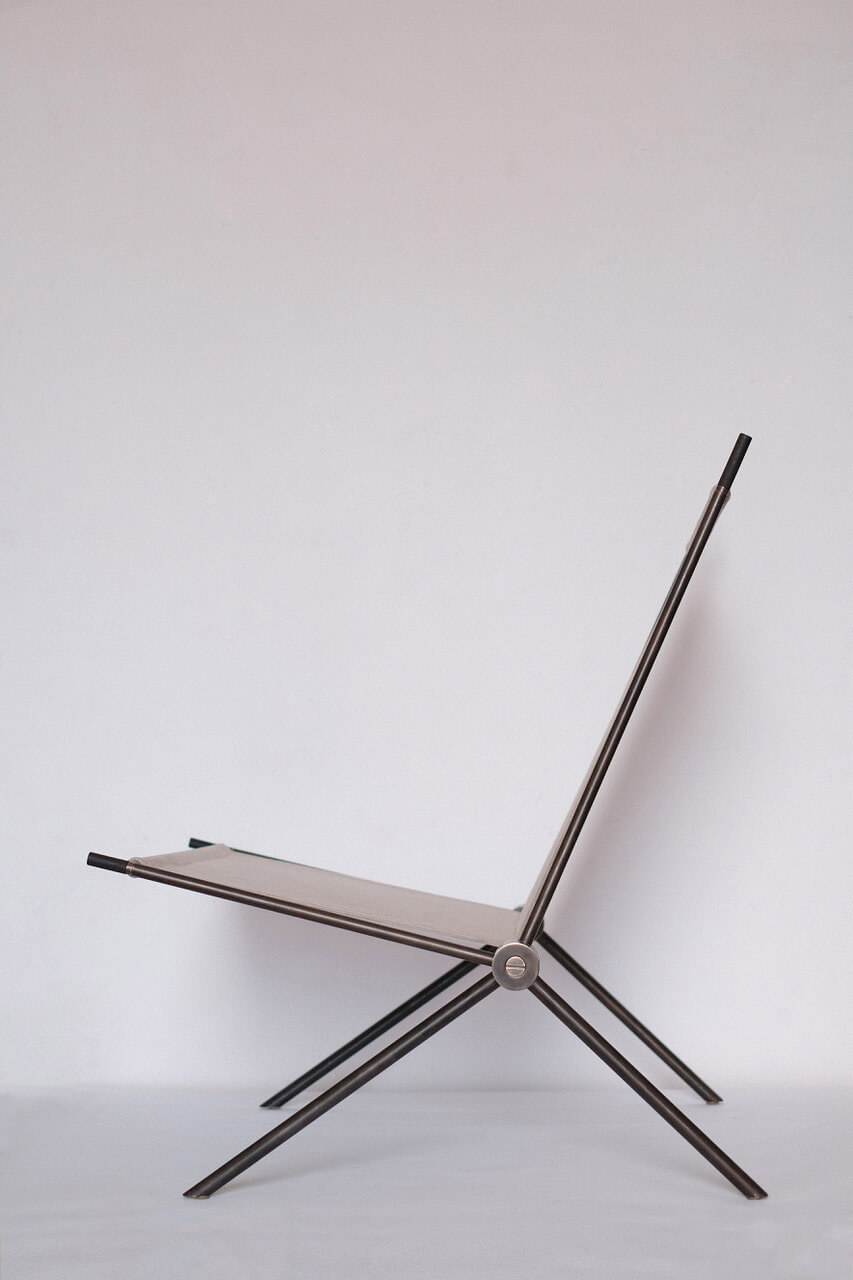
Francesca Torzo for Maniera, ‘Paolo’ chair, 2020
COURTESY: Maniera / PHOTOGRAPH: © Julia Nahmani
“The pieces are elegant, because I believe that elegance is a sign of respect”
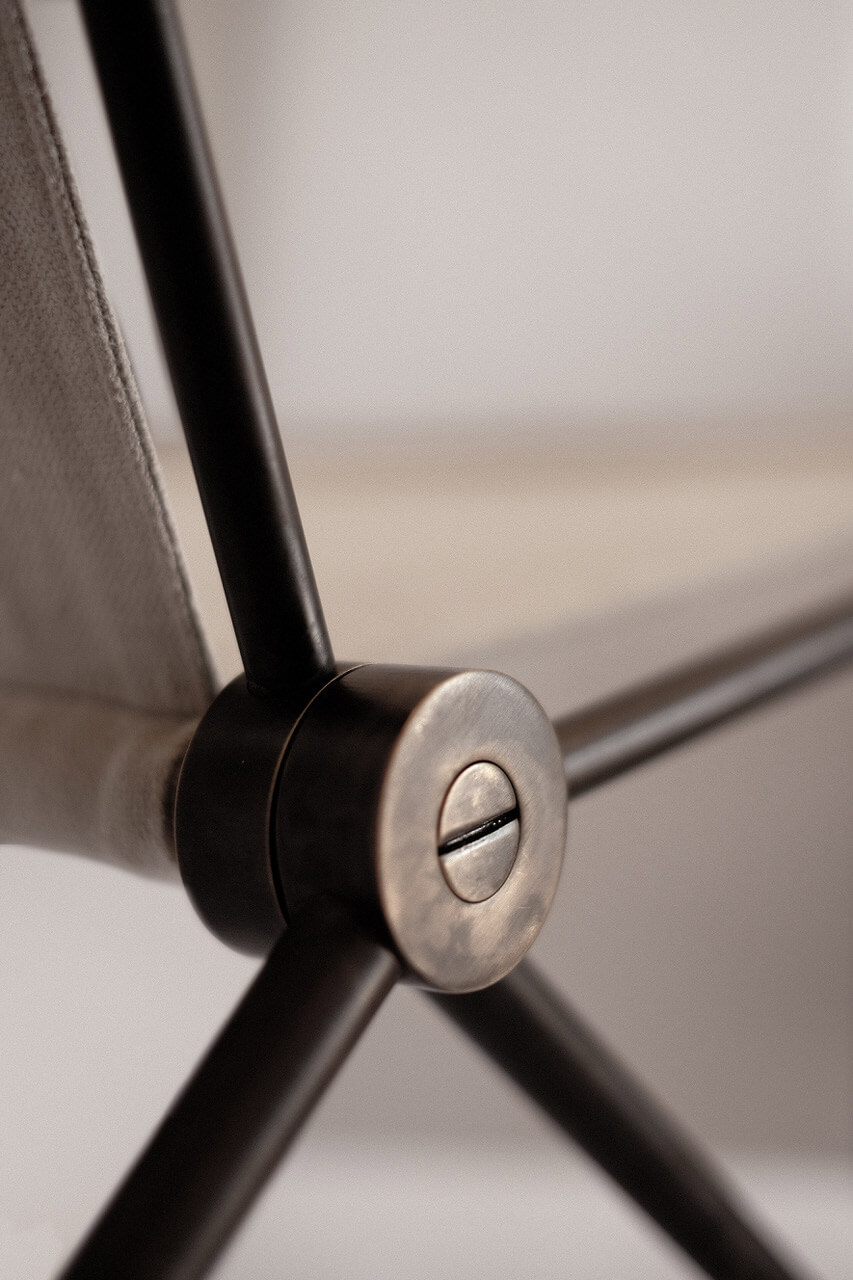
Francesca Torzo for Maniera, ‘Paolo’ chair, 2020 (detail)
COURTESY: Maniera / PHOTOGRAPH: © Julia Nahmani
“There is presence and character, but it is dimmed, it is not loud”
TDE: Your sources are very broad in terms of the images and ideas that lie behind a design.
FT: But they are very precise. For example the sofa, the ‘Ottomano’, comes from an Arabic culture. I had this desire to create a comfortable sofa because most sofas are not comfortable and that makes no sense to me. So, I wanted to make room for a sense of richness – the ripeness of a mass of pillows in the late afternoon, or evening, when you may lie and enjoy rest and conversation. On the other hand, as a counter balance, I wanted to have a structure which was very succinct and practical – there is no scrim, it is put together with joints.
The pillows are individuals so they make a landscape, and it is a cultural landscape, it is a landscape of all those paintings from those Englishmen travelling in North Africa, or Mariano Fortuny, or all the books we have read. In Arabic culture, the divan was a place where all the most important subjects were discussed – businesses or key marriages. They were precious places.
TDE: The pieces seem very resolved.
FT: Everything matters, also what you don’t see. It is important for me that a piece has its fullness, meaning it has its life. This sofa can stand freely in a room, so that you have in the back this beautiful detail of the walnut peg holding the pillows, on top of a line which is again another landscape, and you have this very direct straightforward surface of walnut where you can place perhaps a half glass of wine, while you are kissing a beloved one. You can approach it from every side.
TDE: Did you think about the spaces where these objects might end up?
FT: Not at all. I thought about each one in isolation. Because that is how I buy furniture myself, I fall in love with each piece. Also, I don’t think people should buy their pyjamas to match their furniture!
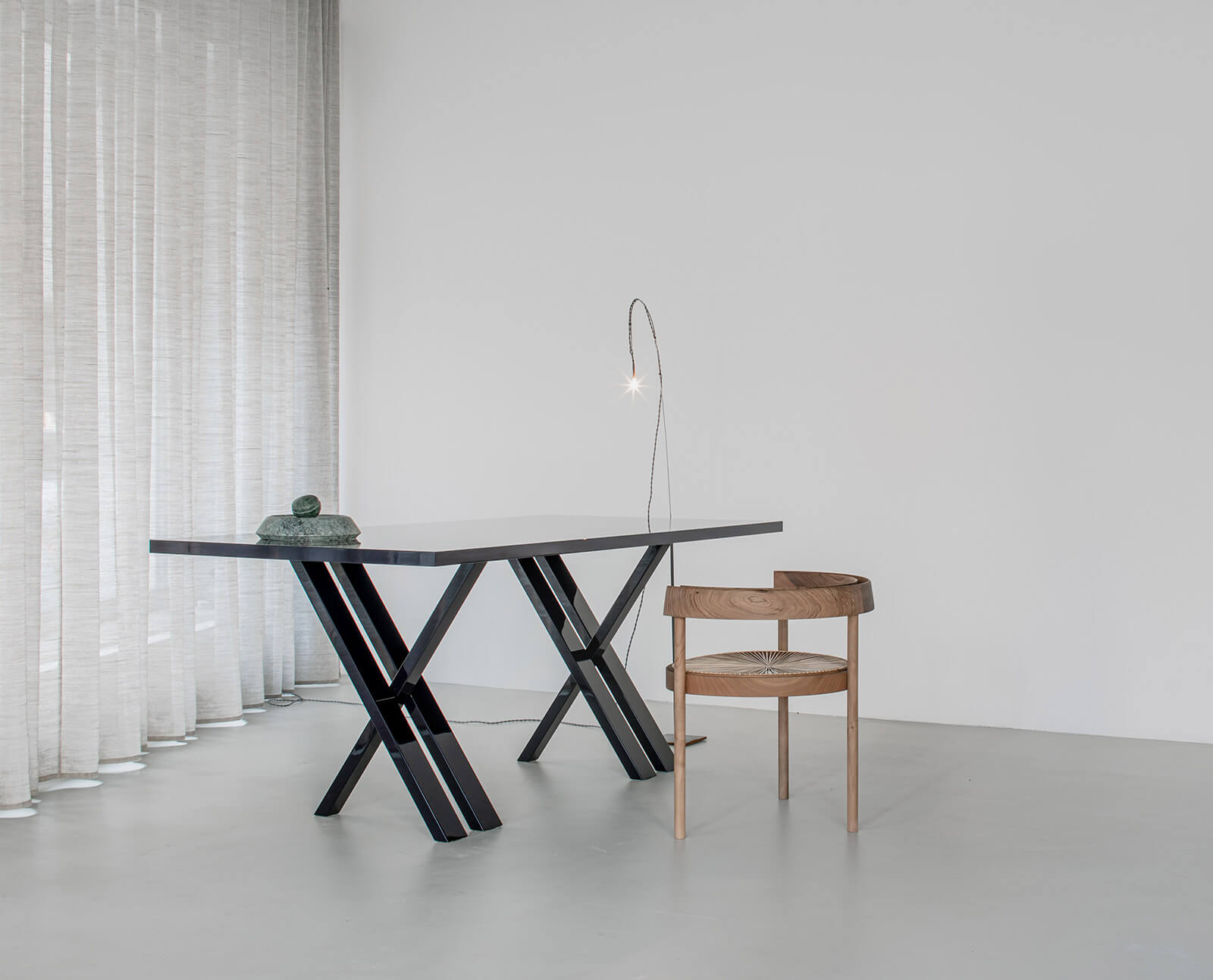
Installation view with ‘Capretta’ table, ‘Larga’ chair and prototype lamp
COURTESY: Maniera / PHOTOGRAPH: © Jeroen Verrecht
TDE: Do you regard these as a series?
FT: No, all the pieces are thought of as individual pieces, but I am tempted to make families: the chair I would like to make into an armchair and a stool. The chair is called ‘Larga’, because thinking of chairs, I hardly ever find chairs that I like. You need comfort, you need them to hold you a little, but also to be welcoming; you need them to please your eyes as a character, but not to invade your eyes. They are so difficult. You need them to be able to live in a crowd, or alone. You need them to be able to move because otherwise you become a slave to your furniture. I love to have a low back so that the wrist can be loose. That is a way to have a mise en scene of the person that is not artificial, it just happens. You may lay your elbow on the chair, you may turn, but there is always a kind of dignity in it. You may also climb on the chair and still have dignity because you have this low horizon, which is making the scene for your upper body. And then for the detailing: I am very happy because it is very silent, you don’t see the effort. It is very important for me that you don’t feel the effort of things, the work behind.
Maniera 22: Francesca Torzo – ‘Gestures: These Are Only Hints And Guesses’ is open from Wednesdays to Saturdays, 2pm – 6pm.




